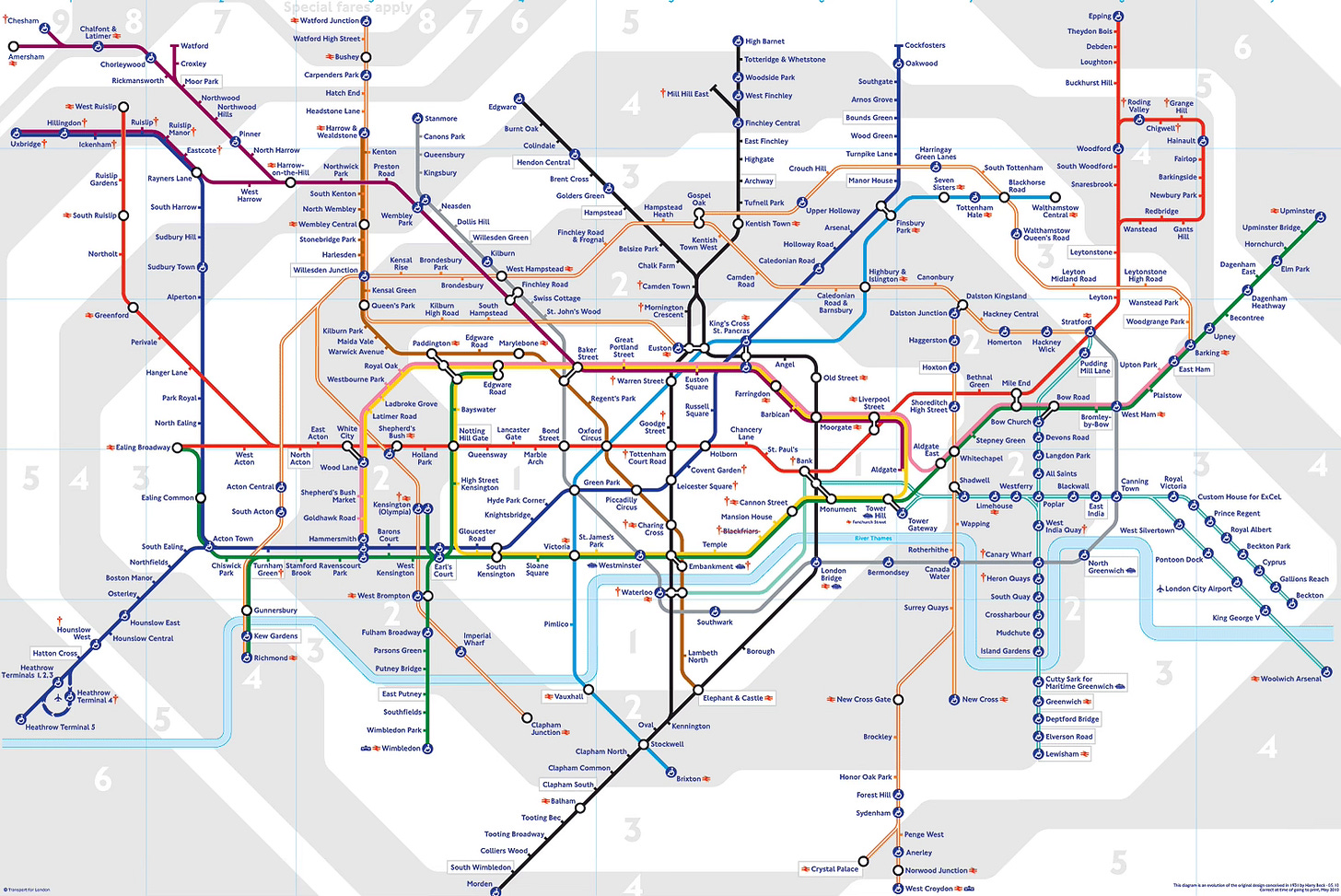MBTI's Double Truth: Valid Poles, Forced Choices
When Personality Assessment Tools Both Help and Hinder: A Critical Analysis
In the interest of providing multiple means of engaging with this blog, below is the podcast style conversation, using our AI friends Johnny and Joanne who go into each blog post. Or below is the usual written format.
Have you ever followed GPS directions only to end up at a dead end where your destination supposedly exists? Or used an outdated map that doesn't show the new bypass? These everyday experiences highlight a crucial truth that extends far beyond navigation: all maps are simplifications of reality, and their usefulness depends entirely on what you're trying to achieve.
Understanding Maps in HR
Consider the London Underground map, a masterpiece of functional distortion. It sacrifices geographical accuracy for usability, making it perfect for planning tube journeys but useless for walking between stations. Now imagine trying to navigate London's underground using Singapore's MRT map. Despite both being transit systems, the Singapore map would be worse than useless – it would actively mislead you, even though it's a perfectly valid tool in its original context.
This geographical mismatch mirrors a crucial issue in personality assessments. Many of our most popular tools were developed and validated using predominantly Western, educated, industrialised, rich, and democratic (WEIRD) populations. Just as Singapore's transit map reflects its unique urban development and cultural context, these assessments reflect specific cultural assumptions about personality, success, and human behaviour.
When Maps Distort Reality
Consider how we navigate using a compass. North and South are genuine opposites - you cannot travel North and South simultaneously. The same is true for East and West. This is similar to how Extraversion and Introversion work in personality - they represent opposing ends of a genuine spectrum.
But here's where MBTI's framework becomes problematic. I won’t go into a full history of MBTI, if you want that, then check out Cognitive Wonderland’s blog. Myers-Briggs Type Indicator takes this valid polar model and applies it to all personality dimensions, forcing them into artificial opposites. It's as if we tried to describe all possible travel directions using only North and East coordinates. Sure, you could plot some journeys this way, but you'd miss countless possible paths that don't fit neatly into these constraints.
This is why MBTI's structure is, as the saying goes, "not totally incorrect." Its Extraversion-Introversion dimension mirrors what we see in more modern tools like the Big Five, because this truly is a bipolar dimension. But forcing all personality traits into similar opposing pairs creates artificial constraints that don't reflect psychological reality.
Think about the Thinking-Feeling dimension in MBTI. The tool forces you to lean one way or the other, as if being analytical somehow prevented you from also being emotionally aware. It's like saying a journey must be either Northward or Eastward, with no other possibilities. But just as we know travel can combine multiple directions and dimensions, human personality traits often coexist and interact in complex ways.
This is where the Big Five offers a more nuanced approach. While it maintains truly bipolar dimensions where appropriate (like Extraversion-Introversion), it doesn't force every trait into this framework. Instead, it allows for independent variation on different dimensions - more like a coordinate system that can capture movement in any direction, rather than forcing everything into North or East.
For practitioners, this distinction matters. When we treat all personality dimensions as opposing poles, we risk overlooking the rich complexity of human personality. Someone might be both highly analytical AND deeply empathetic. A leader might be both task-focused AND people-oriented. By forcing choices between artificial opposites, we might miss the very combinations that make someone uniquely effective in their role.
Imagine trying to navigate if North and South weren't actually opposites, or if East could coexist with West. Sounds absurd for geography, yet this is exactly how human personality often works. We can be both analytical and emotional, both outgoing and introspective, depending on context. These complexities multiply when we cross cultural boundaries.
Cultural Navigation
The Big Five personality model offers more flexibility, working more like a mixing desk in a recording studio. Each trait can be independently "dialled up or down," creating a more nuanced representation of personality. However, even this more sophisticated tool carries cultural assumptions. Research suggests that these five factors might not capture personality structure equally well across all cultures – just as the London Underground map's principles wouldn't work equally well for every city's transit system.
Choosing the Right Map
So should we abandon MBTI entirely? This is where there is debate. Some argue, like an old map, it might still be useful for specific, limited purposes when wielded by skilled practitioners who understand its limitations. The key is matching the tool to your specific needs and context:
- What question are you trying to answer?
- What level of precision do you need?
- What are the consequences of inaccuracy?
- What aspects of personality are most relevant to your goal?
- How well does this tool fit your cultural context?
Beyond the Map
Perhaps most importantly, we must remember that even the most sophisticated personality assessment is still just a map – a simplified representation of infinitely complex human beings. The Big Five might offer more nuance than MBTI, but it still captures only a fraction of human complexity and shows small correlation with life outcomes.
As HR practitioners, we often overrely on these maps, particularly in selection processes. We forget that predicting human behaviour is more complex than navigating city streets, especially across cultural boundaries. No personality assessment, cognitive measure, or values inventory can capture the full richness of human potential – the way someone's eyes light up with passion for their work, their capacity for growth, or their ability to inspire others.
The Practitioner's Challenge
The real skill in HR isn't just knowing how to read these maps – it's knowing when to use them, which ones fit which purposes, and most importantly, when to look beyond them. When next reaching for a personality assessment, ask yourself: Is this the right map for my journey? What territory might it miss? How well does it translate across cultures? And what other tools might I need to navigate this particular human landscape?
After all, the map is not the territory – and in HR, the territory is always human, always complex, and always culturally situated.








For those wanting a deeper dive into MBTI, this is a great long read
https://www.clearerthinking.org/post/how-accurate-are-popular-personality-test-frameworks-at-predicting-life-outcomes-a-detailed-investi
I'm fully aware of the criticisms of MBTI but I find it really useful as a reflection tool... I'm nearly always an INFJ and the descriptors definitely resonate... But I also like the sites that give you the percentages you have on each dimension,and you can then compare where you do change every year or so and think about why 🥰